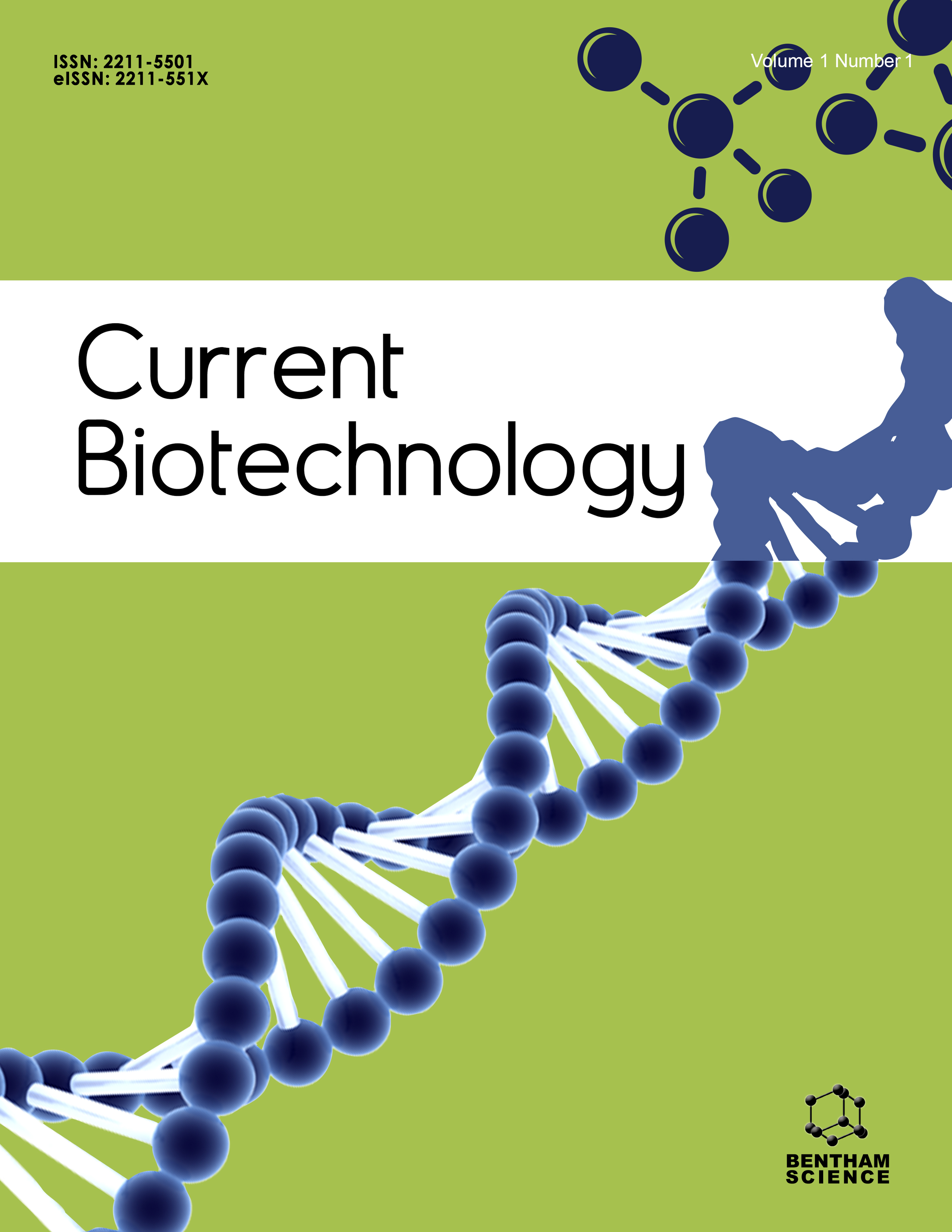- Home
- A-Z Publications
- Current Biotechnology
- Previous Issues
- Volume 11, Issue 2, 2022
Current Biotechnology - Volume 11, Issue 2, 2022
Volume 11, Issue 2, 2022
-
-
Role of Phytoremediation in Enhancing Heavy Metals Tolerance: A Novel Biotechnological Approach
More LessRapid global modernization, urbanization, industrialization, and frequent natural processes release toxic heavy metals into the environment such as mercury (Hg), lead (Pb), cadmium (Cd), arsenic (As) and selenium (Se). In the present scenario, soil and water ecosystems are the main environmental alarms. The remediation of contaminated soils and water ecosystems with appropriate approaches is urgently needed. P Read More
-
-
-
Microbial Production of Lactic Acid – A Review
More LessAuthors: Hira Arshad, Muhammad Irfan, Hafiz A. Shakir, Muhammad Khan, Shaukat Ali, Shagufta Saeed and Marcelo FrancoLactic acid is a generally existing natural acid, which is significant because of its wide use in food and food-related ventures, pharmaceutics, the cosmetics sector and its ability to create biopolymers. Lactic acid is eco-friendly, can be obtained from natural crude substances utilizing different varieties of microbes, and is chemically synthesized. Taking into account the value of lactic acid, this is a brief review of methods of proc Read More
-
-
-
A Brief Overview of Invasive Fungal Infections in Immunocompromised Individuals
More LessAuthors: Deepak K. Pisote, Gowtham Menon and Rohit Lahurao ChoureFungí is eukaryotic microorganisms that may spread and cause illness on the skin, subcutaneously, and systemically. These infections can be invasive and difficult to identify at times. A patient with a damaged immune system is more likely to get a fungal infection. Long-term chemotherapy, organ transplantation, corticosteroid usage, or multidrug treatment all result in immunocompromised people. Why do i Read More
-
-
-
Molecular Modelling and Docking Analysis of Filarial Targets by using New Lead Compounds identified from Psoralea corylifolia and Mimusops elengi
More LessBackground: Psoralea corylifolia and Mimusops elengi could be a source of new bioactive compounds for treating filariasis Psoralea corylifolia and Mimusops elengi. Thediversity of these plants has been proved medicinally and phytochemically. These plants haveplayed an important role in ancient medicine for the treatments of various ailments and especially against many helminths. Methods: Psoralea corylifolia and Mimus Read More
-
-
-
Extraction, Isolation, and Structural Elucidation of Novel Phytoconstituents from Ficus auriculata Lour
More LessAim: In the present study, the phytochemical screening was carried out with the methanolic extract of Ficus auriculata Lour figs. Background: Naturally occurring phytoconstituents have long been utilised to treat illnesses, and these substances have provided natural product chemists with a source of structural diversity. Natural products are usually cited as a rich source of chemical variations in the search for new pharmac Read More
-
-
-
Physicochemical Properties, Antioxidant and Antimicrobial Activities of Unripe Green and Ripened Yellow Banana (Musa sp.) Peel and Pulp Oil Extracts
More LessAuthors: Workinesh Dejene, Zekeria Yusuf, Mulugeta Desta, Megersa Idris, Sultan Seyida and Desta DugasaBackground: Banana peel (Musa Sp.) is more nutritional and rich in phytochemical compounds than its pulp. All parts of the banana plant have medicinal applications. Damage from free radicals at the cellular level causes cell inflammation, increasing the risk of damage from sunlight, radiation, and related development of skin cancer. Objective: The purpose of this study was to assess the physicochemical properties, a Read More
-
-
-
Treatment with Biostimulants Extracted from Salix babylonica L. Induces Drought Stress Tolerance in Zoysia tenuifolia
More LessBackground: Drought stress limits the growth of plants and even impairs their physiological functions. Under water stress, Zoysia tenuifolia has limited biomass, plant height, and leaf length, as well as decreased protective enzyme activity, while it induces the accumulation of large amounts of osmotic regulators. If a plant is in a severely water-deprived environment, its growth is clearly inhibited, and it may even die. Objectiv Read More
-
-
-
Viral Infectivity Inhibition and Viral Biological Elements Destruction using Safe and Low Power Electrons Generated by Life Restoration Device (LRD): An In Vitro Study
More LessAuthors: Waleed E. Madboly and Ahmed M. Abu-DiefBackground: Recently, different side effects have been observed after using antiviral drugs before activation of the immune system. Therefore, it is very important to use effective and non-invasive therapy with fewer side effects for infected virus treatment. Methods: In this study, we designated a new device termed a Life Restoration Device (LRD). The main function of LRD is to generate electric frequencies with lower and safer Read More
-
Most Read This Month
Article
content/journals/cbiot
Journal
10
5
false
en


